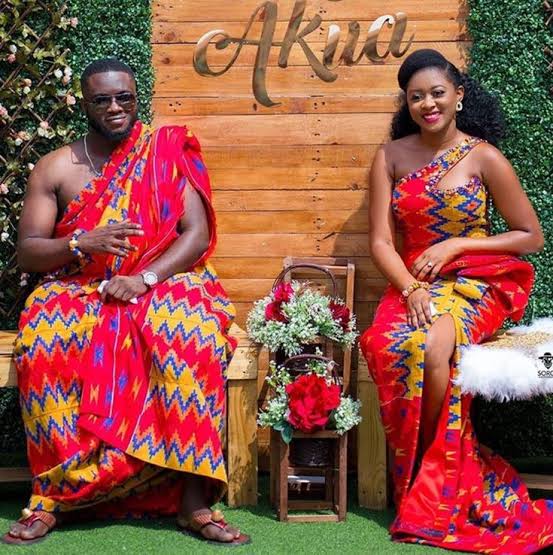A Ghanaian traditional marriage isn’t just a union of two people—it’s the joyful merger of families, communities, cultures, and yes, food. Whether you’re attending one soon or you’re just curious, get ready for a vibrant cultural experience that’s nothing like your typical white wedding.
Let’s walk you through it, step by colorful step.
1. It All Starts with the ‘Knocking’ (Kɔkɔɔkɔ) 🚪
Before anyone walks down an aisle, the groom’s family must “knock” on the bride’s family’s door—literally and symbolically.
What Happens:
- The groom’s family visits the bride’s home with drinks and gifts.
- A spokesman (usually a family elder) formally asks for the lady’s hand in marriage.
- If the bride’s family accepts, a date is set for the traditional wedding.
👉 Fun fact: The knocking isn’t just a custom—it’s a full event. There’s food, speeches, laughter, and sometimes the bride peeking from behind the curtain like a Netflix plot twist.
2. The Bride Price and List 💼
Once approved, the bride’s family gives a marriage list. This can include:
- Drinks (local and foreign)
- Cloth and jewelry
- Money (called dowry)
- Suitcases filled with clothes and sometimes even foodstuff
Note:
This isn’t “buying” the bride—it’s a sign of appreciation and responsibility.
💡 Quick tip: Lists vary by ethnic group. An Ashanti list will be different from an Ewe one. Always come with respect… and a flexible budget.
3. The Big Day – Traditional Ceremony Proper 🎉
The day of the traditional marriage is a cultural carnival!
Main Events:
- Introduction of families: The groom’s family is welcomed like royalty—assuming they brought everything on the list!
- Exchange of items: The bride price and other gifts are officially presented and inspected.
- The bride appears: Sometimes after being “called out” multiple times until she finally agrees to come out (yes, it’s dramatic).
- Acceptance: The bride is asked if she accepts the groom—if she says yes, boom, they’re married!
🎶 Expect live music, clapping, ululations, and a whole lot of dancing.
4. Symbolism and Traditions Vary by Region 🌍
Each tribe brings its own flavor. For example:
- Akan: Elaborate kente cloths, gold jewelry, and vibrant drumming.
- Ewe: Emphasis on family and libation pouring.
- Ga: Public proclamation and large community gatherings.
- Dagomba: Includes storytelling, music, and local rituals.
👗 Everyone comes dressed to impress—there are no “quiet colors” in traditional weddings.
5. Food, of Course! 🍽️
From jollof and waakye to fried tilapia and light soup, there’s a buffet of Ghanaian dishes. You’ll leave with a full heart—and even fuller stomach.
6. The Vibe: A Beautiful Mix of Respect and Flex 🕺🏾
Traditional marriages are both serious and celebratory. Respect for the elders and rituals is high, but so is the vibe. Expect:
- Cheers when gifts are presented
- Aunties cracking jokes mid-ceremony
- Dance-offs between the groom’s friends and bride’s cousins
🕺 You’re not Ghanaian until you’ve tried dancing Azonto in front of judgmental uncles.
🌐 Related Blog Posts:
- Ghanaian Festivals You Didn’t Know Existed
- Meaning Behind Ghanaian Names and Naming Ceremonies
- What to Wear to a Ghanaian Funeral or Traditional Event
- Ghanaian Breakfasts to Try Before You Die
If love had a dress code, Ghanaian traditional weddings would be kente, gold, and joy. These ceremonies are a cultural treasure—filled with heritage, symbolism, laughter, and the occasional uncle who takes over the microphone.
So next time you get invited to one—go! And bring your dancing shoes. 💃🏾

